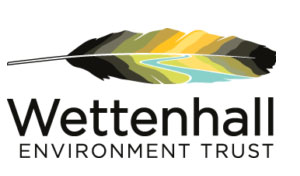The nationally endangered Eltham Copper Butterfly (Paralucia pyrodiscus lucida) represents one of the most fascinating stories both due to its co-dependency in nature and how the community have rallied for this species. This is a rare, good news story within the extinction crisis across Australia of how we can save species. With enough care and resources anything is possible.
This small and endangered butterfly is endemic to Victoria where it was once widely distributed in dry open forest from Melbourne to Western Victoria. Land clearing for urbanisation and farming has resulted in large areas of suitable habitat being removed. Eltham Copper Butterflies (ECB) now only occur in three disjunct regions (Eltham/Greensborough, Bendigo/Castlemaine, Wimmera). The largest ECB habitat area currently centres around Castlemaine and Bendigo, where new colonies have been found between 2007 and 2021 mostly within National Parks and reserves.
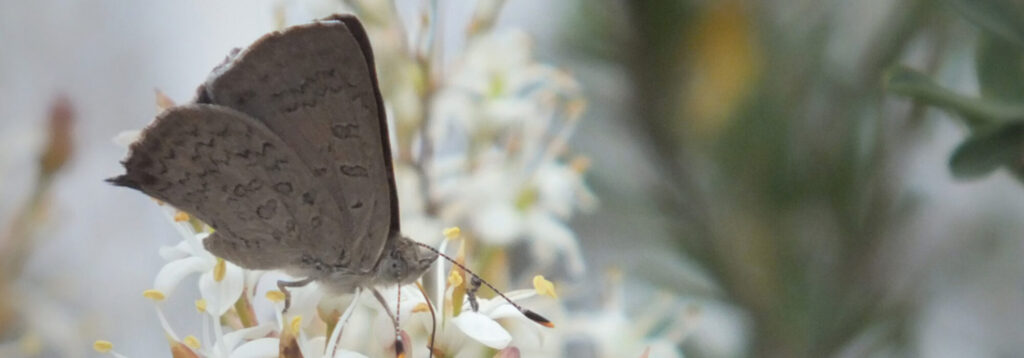
Eltham Copper Butterflies is a small attractive butterfly with bright copper colouring on the tops of its wings and can only be seen during summer months when it is an adult. The rest of the year it lives predominantly underground coming out only at night escorted by ants to feed exclusively on Sweet Bursaria leaves.
ECB are members of the Blue butterfly family (Lycaenidae), 79% of which have a relationship with ants. ECB have a weird, wonderful and totally dependent (obligate) three-way relationship with two Notoncus ant species and Sweet Bursaria plants (Bursaria spinosa). Not to mention dependency on an unknown array of environmental factors including food and other requirements of the Notoncus ants themselves, local predators and parasites, aspect, soil type, soil chemistry and other nectar sources for adult ECB to eat.
ECB larvae feed exclusively on Sweet Bursaria. The adult ECB lay their eggs on or at the base of Sweet Bursaria plants that host a Notoncus ant colony. Notoncus ants are nocturnal ants which live underground in nests, including at the base of Sweet Bursaria plants. Once hatched the larvae are guided by Notoncus ants into the ant nest where they are tended and guarded. This amazing service is achieved through a mixture of trickery and treats. Trickery in that the larvae of this family of Blue Butterflies are believed to give off chemicals and make sounds that can pacify ant aggression, mimic ant brood hormones, attract and alert ants if the ECB larvae is alarmed. Treats in that the ants feed from sugary secretions which are produced from ECB larvae in proportion to how many ants they need to guard them.
These nocturnal ants then lead the larvae out at night to browse on the Sweet Bursaria leaves and defend them from the many nocturnal predators and parasites that see them as a juicy snack. ECB larvae overwinter in the ant nest and are led out at night to graze. Larvae pupate in or near the ant nest, with adult butterflies emerging from October to March each year, peaking from November to January. The adults feed on nectar of flowers, especially Sweet Bursaria flowers, before they lay their eggs at the base of the plant, and on the cycle begins again.
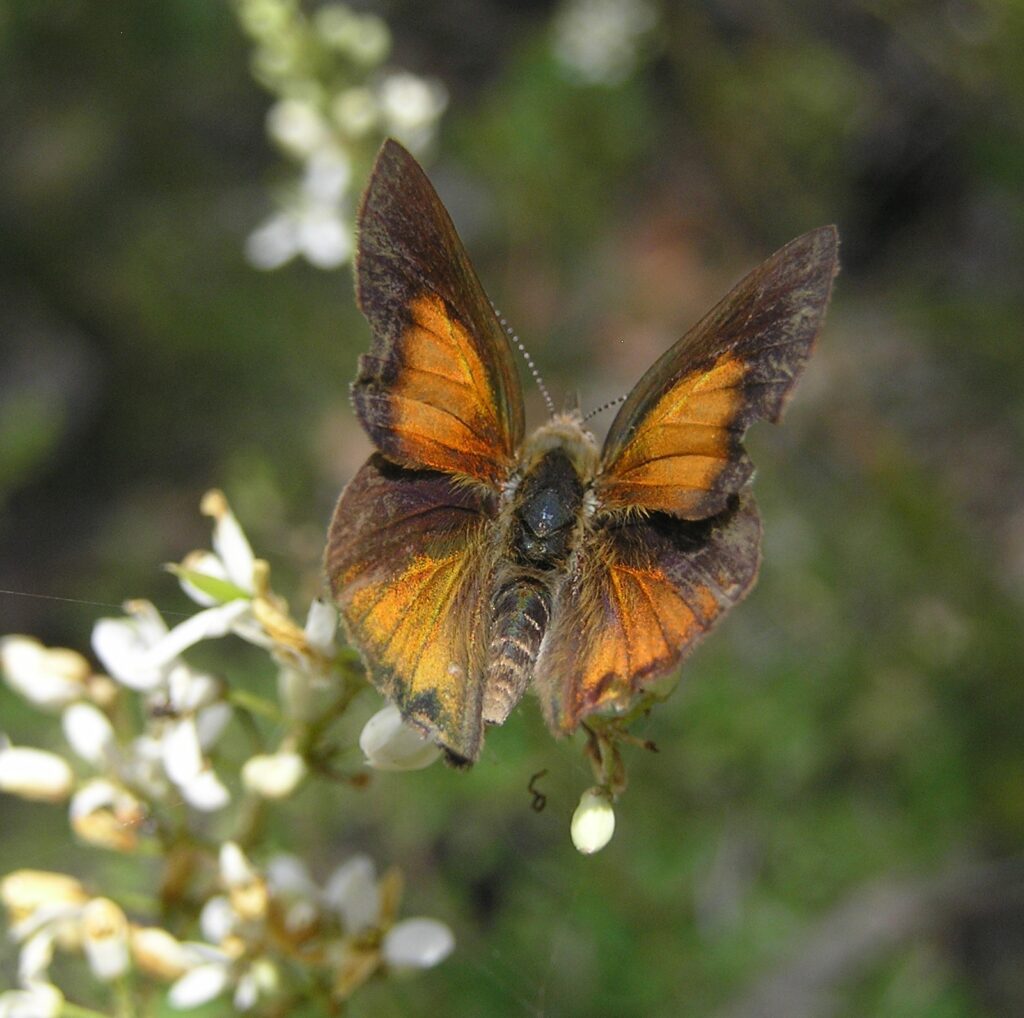
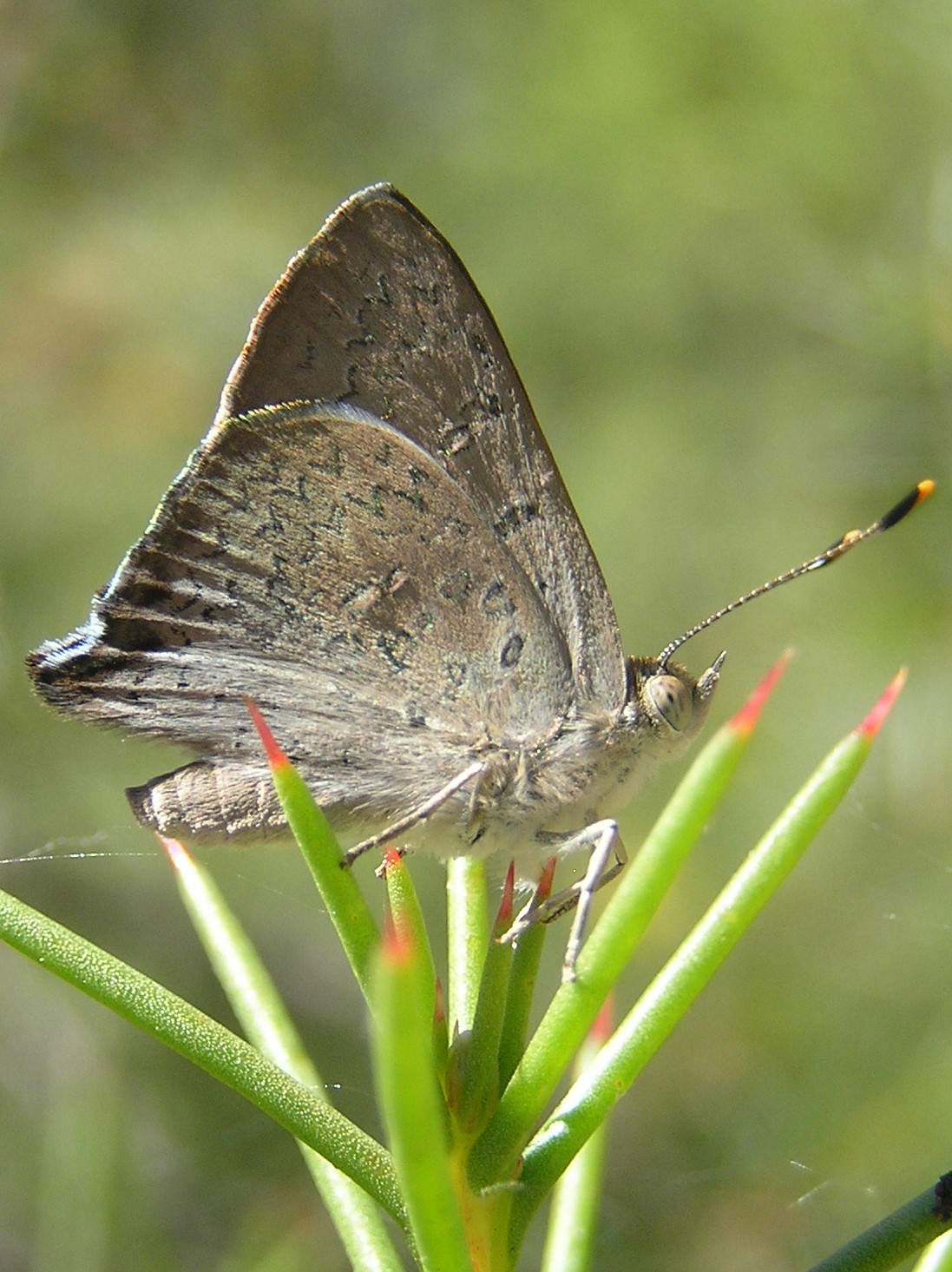
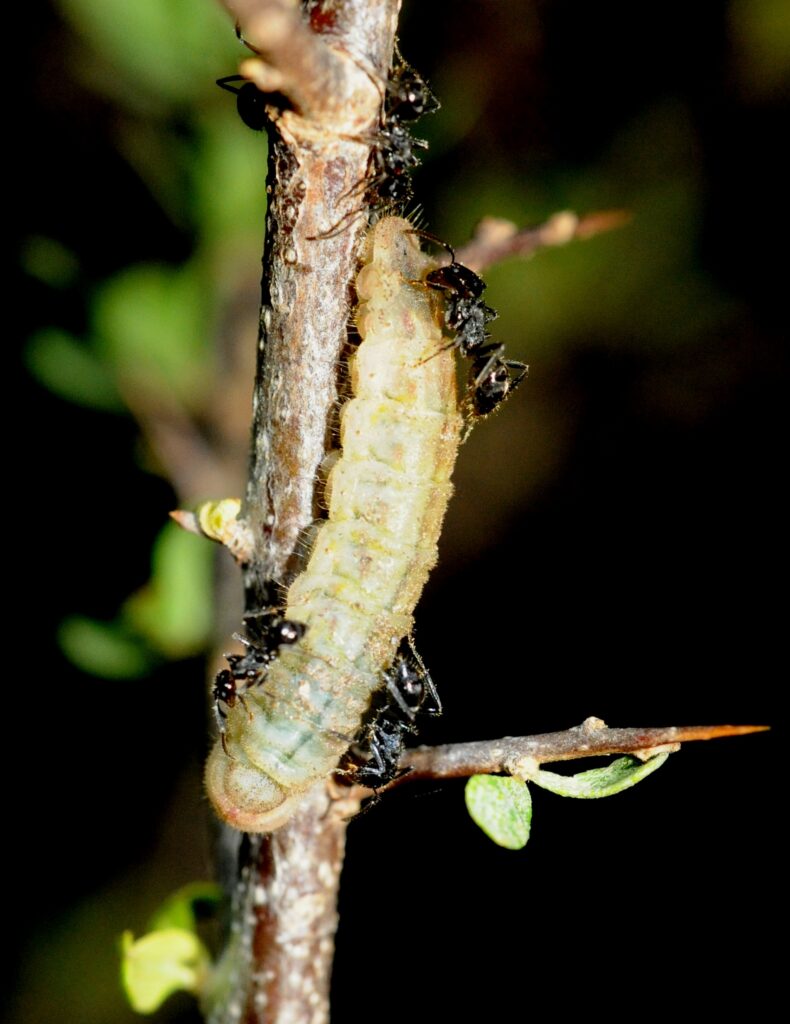
The Eltham Copper Butterfly Protectors
This site has been developed by Elaine Bayes from Wetland Revival Trust in November 2021.
The Northern Victoria ECB populations have been supported by many people over the decades including David Crosby; Professor Tim New; Dr Alan Yen; Dr Michael Braby; Andrea Canzano; Pat Vaughan; Bev van Praagh; Peter Johnson, DELWP; Lisa Cox, Coliban Water.
In the Wimmera, Keith Hatley, Fabian Douglas, Mary Argyll, Pauline and Glenn Rudolph and many more.
In North Central, Friends of Kalimna Park, Mount Alexander Shire Council, DELWP, Dja Dja Wurrung, Coliban Water, Tony Morton, Gary Sobie, Elaine Bayes, Julie Radford, Karl Just, and many members of the local community including the Castlemaine Field Naturalist Club and Castlemaine ECB monitoring team formed in 2019, to name a few.
At a state-wide level there was an ECB Recovery Group formed in the 1990’s which operated into early 2000’s in order to provide a coordinated approach to ECB management. In 2021 the group has informally reformed and includes representatives from organisations who are actively involved in managing ECB populations.
The section on the Melbourne ECB poulation is by generous members of Melbourne based members of the Statewide ECB Recovery Group which includes members of the relevant agencies. For more information on the Melbourne ECB join their facebook page here.
The Eltham Copper Butterfly Funders
This site has been developed by Wetland Revival Trust with additional funding from the Wettenhall Environment Trust and DELWP ICON Species Grant 2021, funded by the Victorian Government’s Biodiversity On-ground Action Program.

Also supported by…
